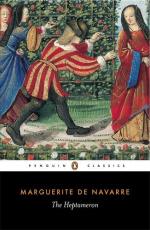4 The Abbey of St. Savin of Tarbes, situated between Argelez and Pierrefitte, in what was formerly called the county of Lavedan, is stated to have been founded by Charlemagne; and here the Paladin Roland is said to have slain the giants Alabaster and Passamont to recompense the monks for their hospitality. The abbey took its name from a child (the son of a Count of Barcelona) who led a hermit’s life, and is accredited with having performed several miracles in the neighbourhood. About the year 1100 the Pope, siding with the people of the valley of Aspe in a quarrel between them and the Abbot of St. Savin, issued a bull forbidding the women of Lavedan to conceive for a period of seven years. The animals, moreover, were not to bring forth young, and the trees were not to bear fruit for a like period. The edict remained in force for six years, when the Abbot of St. Savin compromised matters by engaging to pay an annual tribute to Aspe. This tribute was actually paid until the Revolution of 1789. On the other hand, the abbey was entitled to the right shoulder of every stag, boar, and izard (the Pyrenean chamois) killed in the valley, with other tributes of trout, cheese, and flowers, which last the Abbot acknowledged by kissing the prettiest maiden of Argelez. Amongst various privileges possessed by the monks was that of having their beds made by the girls of the neighbourhood on certain high days and holidays.
In the tenth century Raymond of Bigorre presented the abbey with the valley of Cauterets on condition that a church should be built there and “sufficient houses kept in repair to facilitate the using of the baths.” In 1290 Edward III. of England confirmed the monks of St. Savin in possession of Cauterets. In 1316, when the inhabitants of the latter place wished to change the situation of their village, the Abbot of St. Savin consented, but a woman opposed her veto (all women had the right of vote) and this sufficed to frustrate the scheme. The abbey derived a considerable income from Cauterets, the baths and the houses built there for the accommodation of visitors being let out on lease. The leases of 1617 and 1697 are preserved in the archives of Pau. In the time of Queen Margaret the abbey was extremely wealthy; the Abbot to whom she refers, according to M. Le Roux de Lincy, was probably Raymond de Fontaine, who ruled St. Savin from 1534 to 1540, under the authority of the commendatory abbots, Anthony de Rochefort and Nicholas Dangu, Bishop of Seez. Some of the commentators of the Heptameron believe the latter to have been the original “Dagoucin” who is supposed to tell several of the tales.—Ed.
The Abbot, who came of an ancient line, lodged them honourably, and when taking them to their apartments inquired of them concerning their adventures. When he had heard the truth, he told them that others had fared as badly as they, for in one of his rooms he had two ladies who had escaped a like danger, or perchance a greater, inasmuch as they had had to do with beasts, and not with men. (5) Half a league on this side of Peyrechitte (6) the poor ladies had met with a bear coming down from the mountain, before whom they had fled with such speed that their horses fell dead under them at the abbey gates. Further, two of their women who arrived a long time afterwards had made report that the bear had killed all the serving-men.




